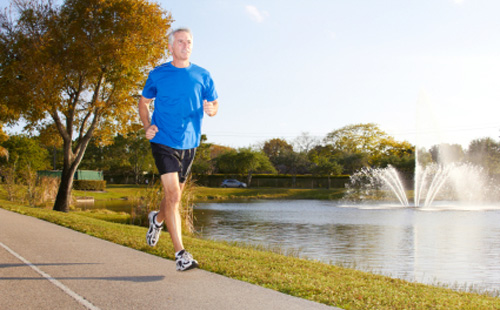In case you were looking for another reason to continue–or take up–running in your golden years, new research published in PLoS ONE found that seniors who run several times a week expend the same amount of energy, or have the same “economy” when walking as a typical person in their 20s. Meanwhile, seniors who walk, as opposed to run, for exercise have the walking economy of a typical sedentary middle-aged adult.
“The bottom line is that running keeps you younger, at least in terms of energy efficiency,” said study co-author Rodger Kram via a news release.
The study’s participants, 15 males and 15 females, had an average age of 69 and regularly walked or ran for 30 minutes at least three times per week. Researchers measured participants’ oxygen consumption and carbon dioxide production while they walked on a force-measuring treadmill at 1.6, 2.8, and 3.9 miles per hour.
They found that the seniors who walked for exercise expend 22 percent more energy walking than the typical person in their 20s, and their senior counterparts who run.
“It’s been known for a long time that as people age their maximum aerobic capacity, or ‘horsepower,’ declines, and that is true for runners as well,” said the study’s lead author, Justus Ortega. “What’s new here is we found that old runners maintain their fuel economy.”
Maintenance of walking economy throughout the aging process is important, researchers said, because impaired walking ability is a key predictor of life expectancy among older adults.
The researchers noted that, while there are many benefits to walking for exercise, including a lowered risk of developing heart disease, diabetes, depression, and weight gain, walking for exercise does little to improve walking economy.
“It was surprising to find that older adults who regularly run for exercise are better walkers than older adults who regularly walk for exercise,” said study co-author Owen Beck. “The take-home message of the study is that consistently running for exercise seems to slow down the aging process and allows older individuals to move more easily, improving their independence and quality of life.”

